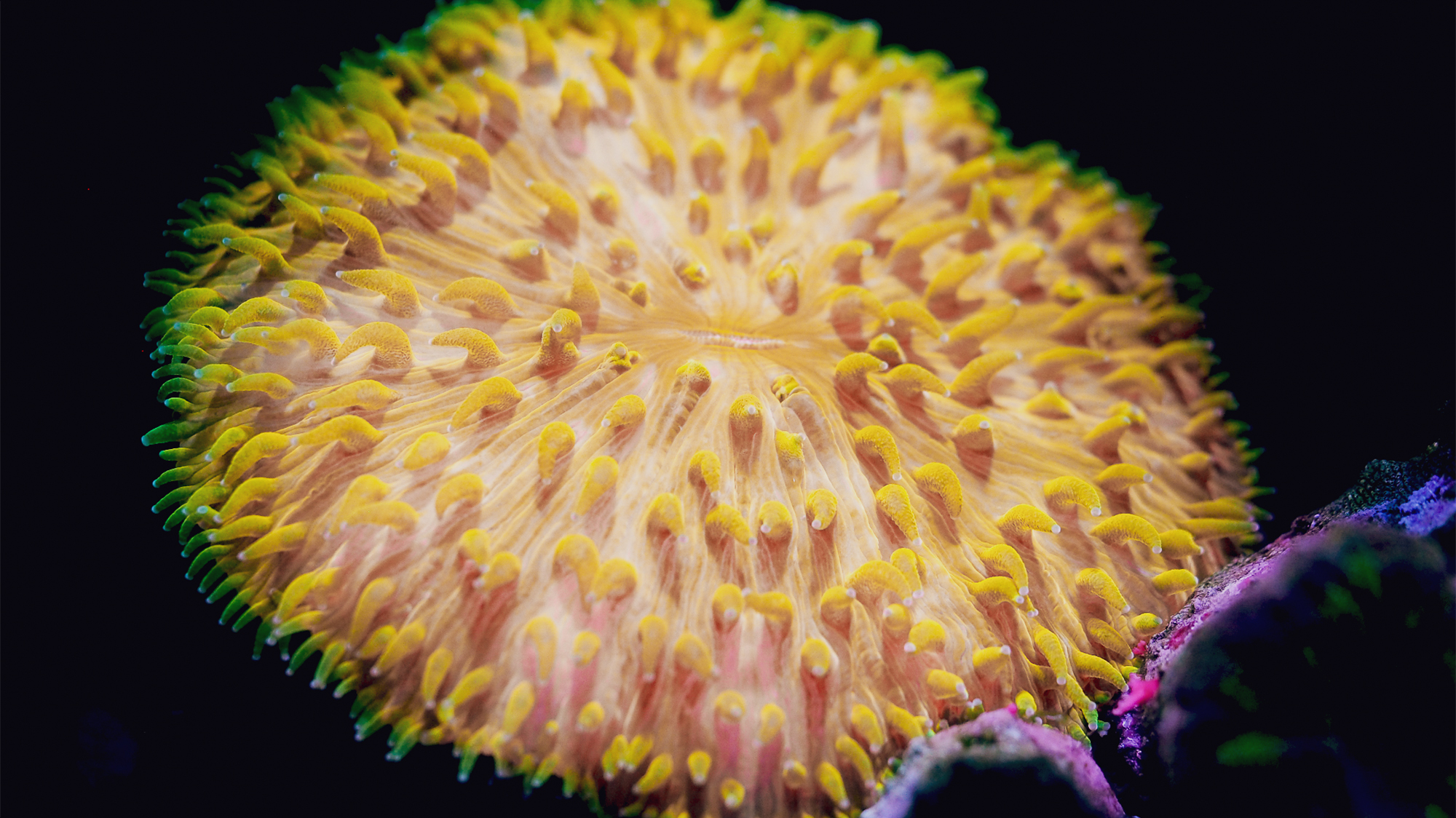Media release
From:
When it comes time to migrate, QUT research has found how a free-living coral ignores the classic advice and goes straight towards the light.
The research – led by Dr Brett Lewis from the QUT School of Atmospheric and Earth Sciences and Reef Restoration and Adaptation Program, and published in PLOS One – investigated how the free-living mushroom coral Cycloseris cyclolites moves, navigates and responds to light in its natural environments.
“Not all corals are attached to the substrate; some are solitary and free-living, allowing them to migrate into preferred habitats,” Dr Lewis said.
“However, the lifestyle of these mobile corals, including how they move and navigate for migration, remains largely obscure.”
Cycloseris cyclolites is an adorably small free-living species of mushroom coral capable of migrating to different reef habitats, often driven by the search for optimal light conditions.
Using high-resolution time-lapse imaging, the team identified that Cycloseris cyclolites was able to move via a mechanism known as pulsed inflation, a process where the coral inflates and deflates its tissue in rhythmic bursts to propel itself forward, like the movement seen in jellyfish.
The mechanism appears to be a widespread strategy for free-living corals, aiding in functions such as self-righting when turned upside down, sediment rejection when buried during storms and now phototaxis – behaviours that help the coral survive in complex environments.
“Our findings suggest that pulsed inflation is not just a survival strategy but a critical mechanism for migration and navigation,” Dr Lewis said.
“The ability of Cycloseris cyclolites to move towards specific light sources is a fascinating parallel to other marine species like jellyfish, which suggests they are more neurologically sophisticated than previously thought.”
Cycloseris cyclolites was also shown to exhibit a strong preference for blue light, with 86.7 per cent of the corals moving towards blue light sources, compared to just 20 per cent for white light.
The ability of these migratory mushroom corals to distinguish between different wavelengths of light aligns with their preference for deeper water habitats, where blue wavelengths dominate, and could be crucial for their migration to optimal depths for survival, reproduction and dispersal.
Providing new insights into coral mobility mechanisms, the findings show just how closely related these corals are to jellyfish mechanisms which have been previously researched as a key point in the evolution of the centralised nervous system humans possess today.
“The findings also have important ecological implications,” Dr Lewis said.
“Understanding their movement strategies could help scientists predict how migratory corals might resist, survive or adapt to changes in environmental conditions such as sea surface changes caused by climate change, which can be reduced by the deeper waters these corals migrate to.
“With these climate-driven factors increasing, the faster the migration, the higher the chance of survival.”
Other QUT researchers involved in the study include Professor Peter Prentis, from the School of Biology and Environmental Science, and Dr Luke Nothdurft, from the School of Atmospheric and Earth Sciences.



 Australia; International; NSW; QLD
Australia; International; NSW; QLD


